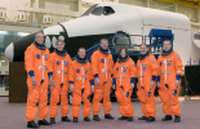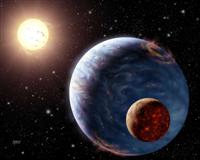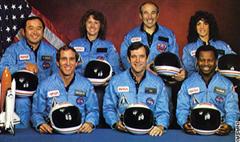“Two possibilities exist: either we are alone in the Universe or we are not. Both are equally terrifying.”
When you look up at the stars in the night sky, what do you envision? Are we alone, or is the Universe full of life, and we’re just looking in the wrong places or with the wrong tools?
Scientists and Cosmologists have no idea, and they have interesting theories about why it is we haven’t found anyone else yet. Before we talk about why, let’s talk about time and distance relative to space travel.
Our star, the Sun is about 8 light minutes and 20 seconds away from Earth. Light emitted from the Sun, traveling at 186,000 miles per second reaches the Earth in 8 minutes and 20 seconds. This is to say that if the Sun were to simply disappear right now at this instant, you wouldn’t know about it for 8 minutes and 20 seconds.
The speed of light is the fastest known constant in the Universe. By contrast, the fastest man-made spacecraft – Voyager 1 – is currently traveling at 38,000 miles per hour. Launched in the 1970s, Voyager is now 11.7 billion miles from Earth. Taking 40 years to go that distance, the speed of light would have done it in a few hours. At our current technological level, it will take 81,000 years to get to the next solar system. Our current technology makes it prohibitive for us – our our robots – to visit any known close solar system.
The Fermi Paradox states that due to the size of the Universe, statistics indicates that there has to be a Sun-like star elsewhere in our galaxy or others, and an associated-Earth like planet capable of sustaining intelligent life. The Universe should be full of intelligent life to the age and size of the known Universe. So why haven’t we seen any evidence?
There are several theories as to why and each of them are plausible. “The Great Filter” theory states that there is some unknown barrier that stops intelligent life from developing past a certain point. It could be behind us (in our past) or ahead of us (in our future) and it will work as a barrier toward evolution of intelligent life. 1
It is also possible that life is common, but intelligent life is uncommon and we are a rare breed. We’re special, and we don’t give each other enough credit.
Another theory is that it’s the nature of all intelligent life to destroy itself when it reaches a certain age. War, disease, famine and fighting for needed resources eventually destroys civilizations before they can reach a level of intelligence and technology capable of inter-stellar travel.
Building upon this theory, some scientists believe that it’s the nature of intelligent life to destroy others as they appear, in an effort of self-preservation.
Furthermore, other theories suggest that perhaps the distances between space and time are just too great and with the speed of light being the fastest known speed in the Universe, it just simply impossible for interstellar travel to be possible.
There are further hypothesis, and you can research those on your own, as I am only gong to touch on two more here. I’ll touch on these next two because I believe both of these theories could be correct, and both present their own issues of morality, mortality, and religion.
One particularly interesting idea is the Zoo Hypothesis. The Zoo Hypothesis implies that there are many advanced civilizations in the Universe capable of observation of or travel to Earth, but they simply don’t because they want us to develop naturally, without external interference. I’m not sure I agree with it, only because as I understand it, it assumes that the aliens have no use for our resources and/or are naturally benevolent. Perhaps aliens of a certain age or sophistication – type III or IV on the Kardashev scale – have no use or time for being anything other than good, kind beings, which would make the Zoo Hypothesis work.
Then again, if they see us destroying each other and polluting the environment, and they are kind beings, wouldn’t they intervene? If they see us destroying each other and the planet, and they do nothing, they’re complicit, and a spectator to destruction. And that’s not a quality I like in someone, and then I would suggest that they may not kind beings, and also don’t need our resources. They’re simply apathetic, or too busy to care.
The Simulation Hypothesis
The Simulation Hypothesis states that we’re not real. We’re a computer-generated being, playing out in a game on someone’s hard drive. Let me explain why this makes some sense.
The Universe is 13 billion years old. Humanity has been around for 130,000 years give or take. Likely, there are far far advanced civilizations in the Cosmos that have millions or billions of years of technological advancement compared to us. Here we are, in our kitchens or living rooms or cars reading this blog post. See how far we have come in 30 years. Now imagine a billion years of technological advancement. As we play Cities Skylines and take care of our “Sims” to make sure they are housed and live in a nice city, it is not out of the question to assume that a civilization a billion years more technologically advanced than us have developed similar simulations – and we are their “Sims”.
Neil deGrasse Tyson puts the odds at “50-50” that we’re living in a simulation on someone’s hard drive. According to Mr. Tyson we’re equally likely to be real vs. a simulation in some high-tech being’s computer.
If we are a simulation, how did we get free thought? Why do we feel? What happens when we’re born, and what actually happens when we die?
This hypothesis offers many more questions than it answers, but it’s an important thing to discuss.
I hope I have piqued your interest in “why we are here?” and I encourage you to read further about these subjects if it interests you.
1 – https://en.wikipedia.org/wiki/Great_Filter







